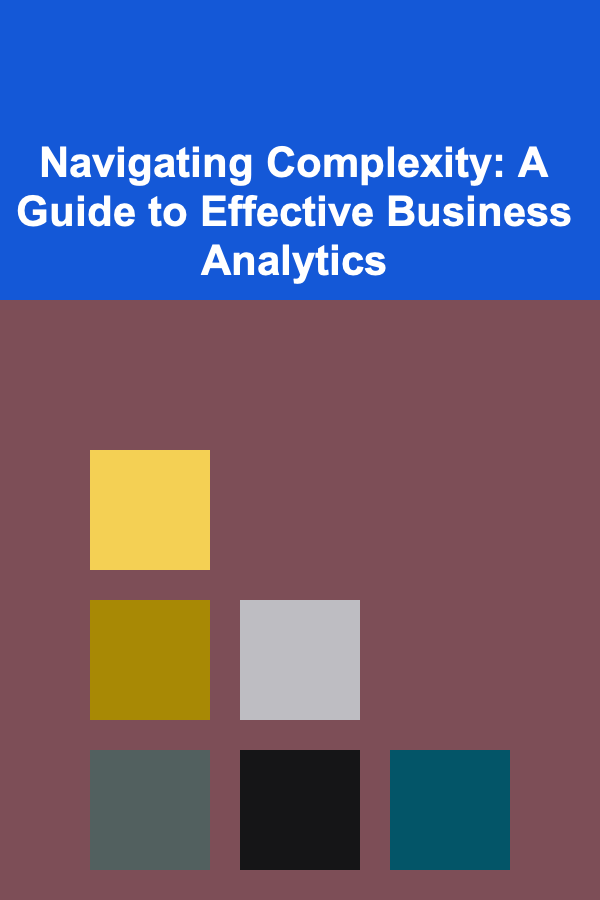
How to Enhance Your Problem-Solving Skills
ebook include PDF & Audio bundle (Micro Guide)
$12.99$9.99
Limited Time Offer! Order within the next:

Problem-solving is one of the most essential skills in both professional and personal life. It allows you to approach challenges with a structured mindset, work through obstacles effectively, and come up with creative solutions. Whether you are solving a technical issue, navigating personal conflicts, or developing strategies for a business, your problem-solving abilities are tested daily. Fortunately, problem-solving is a skill that can be developed and refined through practice and conscious effort.
This comprehensive guide aims to provide you with strategies, techniques, and insights to enhance your problem-solving skills. We will explore various types of problems, different problem-solving frameworks, and methods that can help you approach problems with a creative and structured mindset. By the end of this article, you will have a toolkit of strategies that will help you become a more effective and efficient problem solver.
Understanding the Nature of Problems
Before delving into problem-solving strategies, it's important to understand the different types of problems you may encounter. Problems can vary in complexity, scope, and urgency, and recognizing the type of problem is the first step in approaching it effectively.
A. Simple Problems
Simple problems are those that have a clear solution and a well-defined path to resolution. These problems often require minimal analysis and can be solved through standard procedures or previous experience. For example, fixing a broken lightbulb or filling out a form is a simple problem.
B. Complex Problems
Complex problems have multiple factors, variables, and unknowns. They may not have a straightforward solution, and the correct approach often requires analyzing multiple perspectives, gathering information, and generating possible solutions. Examples of complex problems include launching a new product in the market or resolving an organizational conflict.
C. Wicked Problems
Wicked problems are particularly difficult because they are deeply interconnected with other issues and often have no clear solution. They are constantly evolving, and their solutions tend to be controversial. Examples of wicked problems include climate change, poverty, and global health crises. These problems often require collaboration, innovative thinking, and long-term strategies.
D. Personal Problems
Personal problems are those that affect individuals on an emotional or psychological level. They often involve decisions about one's life choices, relationships, career, or health. While personal problems may not always require analytical or logical solutions, they still require problem-solving skills to navigate the complexities of emotions, interpersonal dynamics, and life goals.
Developing a Problem-Solving Mindset
To enhance your problem-solving abilities, the first step is to develop the right mindset. A growth mindset, as coined by psychologist Carol Dweck, is essential for becoming an effective problem solver. This mindset revolves around the belief that abilities, including problem-solving skills, can be developed through effort, learning, and perseverance.
A. Embrace Challenges
A key aspect of a growth mindset is embracing challenges. Instead of viewing problems as obstacles, see them as opportunities for learning and growth. Challenges allow you to stretch your capabilities and develop new skills. When you approach problems with the mindset of "I can learn how to solve this," you are more likely to persist through difficulties and find creative solutions.
B. Cultivate Patience and Persistence
Problem-solving often takes time, and it's common to encounter setbacks along the way. Developing patience and persistence is crucial in overcoming obstacles. Sometimes, it may take several attempts before finding the right solution. Instead of becoming frustrated, try to stay calm and focused on the process. Learn from each attempt and refine your approach.
C. Focus on the Process, Not Just the Outcome
Effective problem-solving is a process, not just a result. Focusing solely on the end goal can cause you to overlook the intermediate steps that will lead to a solution. By focusing on the problem-solving process, you'll learn valuable lessons along the way, even if you don't immediately arrive at the correct solution. This focus on the process will also help you develop your skills for the future.
D. Be Open to New Perspectives
The ability to look at problems from different perspectives is essential for creative problem-solving. Be open to ideas and suggestions from others, as they might offer a new way of thinking about a problem. This openness can also help you break free from mental roadblocks and identify innovative solutions that you may not have considered on your own.
Key Problem-Solving Strategies
Once you've developed the right mindset, it's time to learn and apply specific problem-solving strategies. These strategies can help you approach a problem in a structured way, leading to more effective solutions. Here are several proven problem-solving techniques you can incorporate into your process.
A. The Scientific Method
The scientific method is a systematic approach to problem-solving used in research and experimentation. It consists of the following steps:
- Observation: Identify the problem or question.
- Research: Gather information and understand the context.
- Hypothesis: Formulate a possible solution or explanation.
- Experimentation: Test the hypothesis by conducting experiments or trials.
- Analysis: Evaluate the results to determine if the solution works.
- Conclusion: Draw conclusions based on the data and refine the hypothesis if necessary.
The scientific method is particularly useful when you need to approach a problem logically and objectively, and it's ideal for problems that require empirical testing.
B. Root Cause Analysis (RCA)
Root Cause Analysis is a technique used to identify the underlying cause of a problem rather than just addressing its symptoms. By focusing on the root cause, you can prevent similar problems from arising in the future. The RCA process typically involves:
- Problem Identification: Define the problem clearly.
- Data Collection: Gather evidence and analyze the circumstances surrounding the problem.
- Identify Possible Causes: List all potential causes of the problem.
- Identify the Root Cause : Use tools like the 5 Whys or Fishbone Diagram to identify the true source of the problem.
- Implement a Solution: Address the root cause to prevent recurrence.
Root Cause Analysis is particularly effective in complex scenarios where surface-level solutions won't address the deeper issue.
C. Brainstorming
Brainstorming is a popular technique for generating creative solutions to problems. During a brainstorming session, you come together with a group (or individually) to generate as many ideas as possible without filtering or judging them. The goal is to come up with a wide range of possible solutions, some of which may be unconventional or unexpected.
Once you have a list of potential solutions, you can analyze them and determine the most feasible ones. Brainstorming encourages creativity and can often lead to breakthrough ideas.
D. Mind Mapping
Mind mapping is a visual technique that helps organize information and explore different facets of a problem. By creating a mind map, you can break down complex problems into smaller components, which helps you visualize connections and relationships between different elements.
To create a mind map:
- Start with the central problem: Write the main issue in the center of the page.
- Branch out: Add related ideas or factors that contribute to the problem around the central issue.
- Expand: Continue branching out to more specific aspects and sub-problems.
Mind mapping is particularly helpful for visual learners and those working on multifaceted problems.
E. The 80/20 Rule (Pareto Principle)
The 80/20 rule suggests that 80% of your results come from 20% of your efforts. When solving a problem, identify the most critical 20% of factors that are likely causing the majority of the issue. By focusing on these key areas, you can maximize your efforts and achieve more effective results in less time.
F. Design Thinking
Design thinking is a problem-solving framework that emphasizes empathy, creativity, and collaboration. It is commonly used in product design, but can be applied to a wide range of problems. The design thinking process involves the following stages:
- Empathize: Understand the needs, challenges, and perspectives of the people affected by the problem.
- Define: Clearly articulate the problem based on your research and empathy findings.
- Ideate: Generate ideas and possible solutions to address the problem.
- Prototype: Create a simple version of the solution or model.
- Test: Evaluate the prototype and gather feedback to refine the solution.
Design thinking fosters innovation and is particularly effective when dealing with problems that require user-centered solutions.
Improving Your Problem-Solving Abilities
While using problem-solving strategies is essential, consistently improving your skills requires a proactive approach. Here are some ways to enhance your problem-solving abilities over time:
A. Practice Regularly
The best way to improve any skill is through practice. Look for opportunities in your daily life, work, or studies to apply problem-solving techniques. The more you practice, the more intuitive problem-solving will become.
B. Reflect on Your Problem-Solving Experiences
After solving a problem, take time to reflect on the process. What strategies worked well? What could have been done differently? This reflection will help you identify areas of improvement and develop better approaches for the future.
C. Learn from Others
Observe how others approach problems, especially those who are known for their problem-solving skills. You can learn a lot by discussing strategies and gaining new perspectives. Additionally, seeking feedback on your own solutions can provide valuable insights.
D. Expand Your Knowledge
Problem-solving often requires a broad base of knowledge. Continuously expand your understanding in various fields, whether through reading, taking courses, or engaging in diverse experiences. The more knowledge you have, the more tools you'll have in your problem-solving toolkit.
E. Stay Calm Under Pressure
Problem-solving can be stressful, especially in high-pressure situations. Practicing mindfulness, stress management techniques, and keeping a positive attitude can help you remain calm and focused during challenging problems. A clear mind is essential for effective problem-solving.
Conclusion
Enhancing your problem-solving skills is a journey that requires patience, practice, and a willingness to learn. By developing a problem-solving mindset, applying effective strategies, and consistently refining your abilities, you can approach any challenge with confidence. Remember that problems are opportunities for growth, and every solution brings you closer to becoming a better problem solver. Keep learning, stay curious, and always embrace the process of solving problems with a creative and structured approach.

How to Create a Modern Lighting Scheme in an Old Home
Read More
How to Ensure Accessibility for All Guests at Your Event
Read More
How to Handle Finances as a Newly Married Couple
Read More
Innovative Solutions in Industrial Engineering: A Practical Guide for Engineers
Read More
Navigating Complexity: A Guide to Effective Business Analytics
Read MoreInvestment Interest Expense Tracker: A Beginner's Guide
Read MoreOther Products

How to Create a Modern Lighting Scheme in an Old Home
Read More
How to Ensure Accessibility for All Guests at Your Event
Read More
How to Handle Finances as a Newly Married Couple
Read More
Innovative Solutions in Industrial Engineering: A Practical Guide for Engineers
Read More